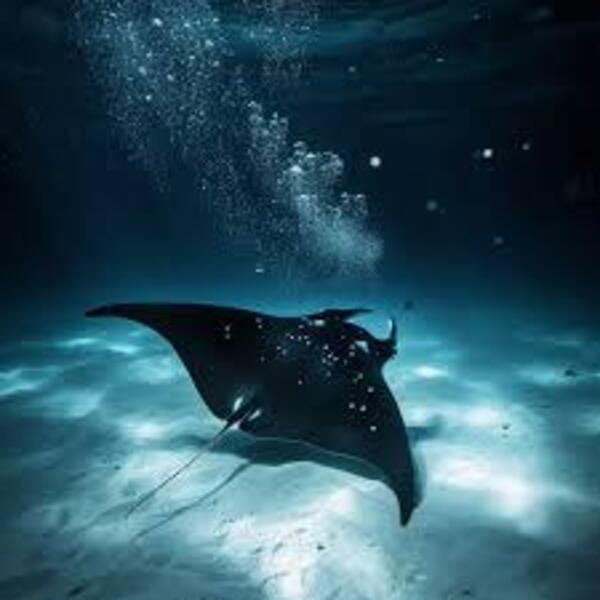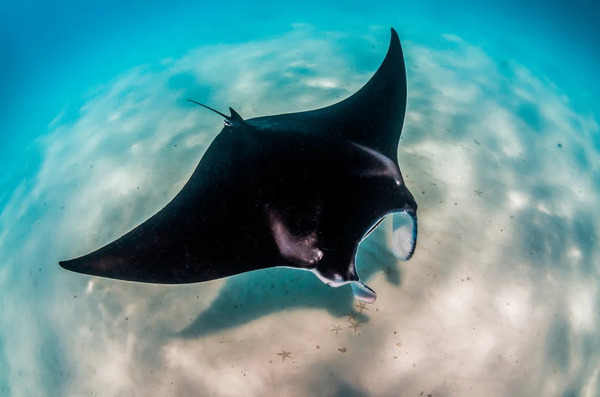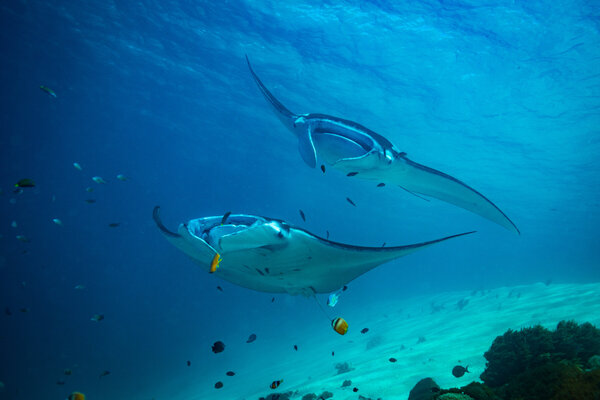The ocean is home to many fascinating creatures, but few are as majestic as manta rays. Known for their enormous size and graceful movements, manta rays capture the imagination of marine enthusiasts worldwide. This article dives deep into the world of the biggest manta rays, exploring their size, behavior, habitats, conservation, and our interactions with these gentle giants.

The giant manta ray (Manta birostris) holds the title for the largest species of manta rays. These marine marvels are found in oceans around the globe, stunning divers and researchers alike with their immense size and elegance.
Wingspan: Giant manta rays can reach a jaw-dropping wingspan of up to 29 feet (8.8 meters).
Weight: They weigh between 2,200 and 3,000 pounds (1,000 to 1,350 kilograms).
Comparison: Their size is often compared to that of a small airplane, making them one of the largest fish in the ocean.
The largest manta ray ever recorded had a wingspan of over 30 feet, cementing its status as a true ocean giant.
Manta rays are divided into two main species:
Giant Manta Ray (Manta birostris): The largest species, often found in open oceans.
Reef Manta Ray (Mobula alfredi): Slightly smaller, preferring shallower waters near reefs.
While both are impressive, the giant manta ray outshines its counterpart in sheer size and global distribution.

Manta rays inhabit warm, tropical, and subtropical waters around the globe. They are found in a variety of marine environments, including:
Open Oceans: Giant manta rays often roam vast stretches of the Pacific, Atlantic, and Indian Oceans.
Coral Reefs: Reef manta rays tend to stay near coastal areas with abundant food sources.
Hotspots: Popular locations to spot manta rays include the Maldives, Hawaii, the Great Barrier Reef, and Indonesia.
Manta rays are known for their migratory behavior, traveling great distances in search of plankton-rich waters.
Manta rays are filter feeders, consuming vast quantities of plankton as they glide through the ocean. Their feeding technique, known as ram feeding, involves swimming with their mouths wide open to filter plankton from the water.
Gentle Giants: Despite their size, manta rays are harmless to humans.
Social Creatures: Manta rays often gather in groups, especially during feeding or cleaning sessions.
Acrobatic Displays: They are known for their breathtaking breaches, leaping out of the water and spinning mid-air.
Sadly, the survival of manta rays is under threat due to human activities.
Overfishing: Manta rays are often caught for their gill plates, used in traditional medicine.
Bycatch: Many rays are accidentally captured in fishing nets.
Habitat Loss: Coral reef degradation and ocean pollution harm their habitats.

Manta rays are listed as vulnerable on the IUCN Red List. Conservation organizations are working to protect them through:
Marine Protected Areas (MPAs): Designated zones where fishing and other harmful activities are restricted.
Regulated Trade: International agreements like CITES monitor and limit the trade of manta ray products.
Education and Tourism: Raising awareness through sustainable diving and snorkeling tours helps fund conservation efforts.
Swimming with manta rays is a dream experience for many ocean enthusiasts. These encounters are both safe and unforgettable, provided they are done responsibly.
Keep Your Distance: Avoid touching or chasing the rays to ensure their comfort and safety.
Choose Ethical Operators: Support tours that follow strict guidelines for manta ray encounters.
Best Locations: Popular spots for manta ray diving include Kona (Hawaii), Hanifaru Bay (Maldives), and Raja Ampat (Indonesia).
Largest Brain in Fish: Manta rays have the largest brain-to-body ratio among all fish species.
Intelligent Creatures: Studies suggest manta rays may recognize themselves in mirrors, a trait of higher intelligence.
Unique Patterns: Each manta ray has a unique spot pattern on its belly, which researchers use for identification.
Misunderstood Relatives: Unlike stingrays, manta rays lack a stinger and are completely harmless.
Manta rays play a vital role in maintaining healthy ocean ecosystems. As filter feeders, they help regulate plankton levels, which in turn affects the food chain. Additionally, they contribute to eco-tourism, generating income for local communities and funding conservation initiatives.
The biggest manta rays, with their remarkable size, grace, and intelligence, are truly the gentle giants of the sea. However, they face numerous challenges that threaten their survival. By learning more about these incredible creatures and supporting conservation efforts, we can ensure they continue to thrive in the oceans for generations to come. Whether you're an ocean lover, a diver, or simply curious, manta rays are a testament to the beauty and complexity of marine life.
animal tags: Manta-Rays
We created this article in conjunction with AI technology, then made sure it was fact-checked and edited by a Animals Top editor.